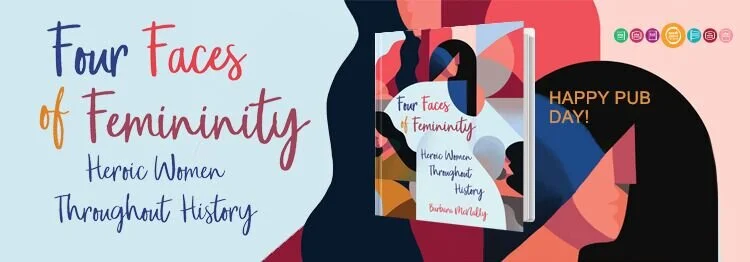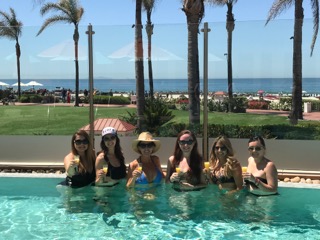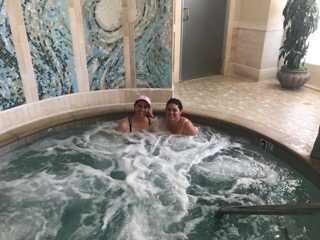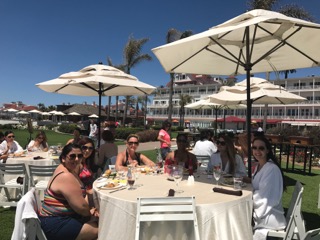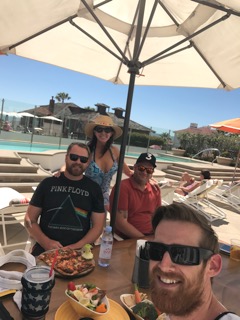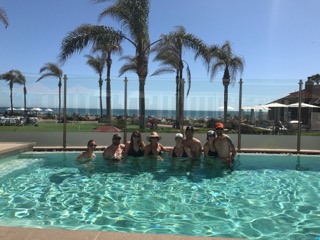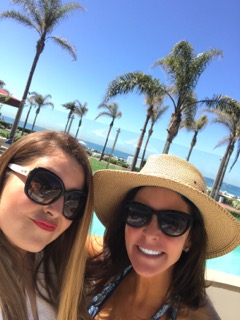Ever heard women called “the weaker sex”? Does anyone else out there think that sentiment is just plain ludicrous? We women create and run our own companies, make world-changing discoveries, carry and give birth to babies, and do it all in the face of constant discrimination. We strive and achieve and triumph in the face of huge challenges. Anyone who thinks women are weak and inferior clearly isn't paying attention!
A few months ago, I met a woman who is a shining example of how strong, brave, and determined women can be. Stephani Victor is an alpine skier, a Paralympic gold and silver medalist, an all-around incredible human being, and a fearless woman warrior. When she was just 26 years old and newly graduated from USC's film school, she was loading her car when catastrophe struck. An out-of-control car careened into her driveway and crushed her against her own vehicle. To save her life, doctors were forced to amputate both legs above the knee. Her life would never be the same.
As she ticked off the days and weeks in intensive care, Stephani began daydreaming about creating a documentary film to chronicle her recovery process. And she made that dream a reality; “The Lengths I Will Go” captures her endless hours of rehabilitation, 13 reconstructive surgeries, re-entry into society, and learning to walk on two prosthetic legs. Instead of simply recovering in private, she decided to use her experience to help inspire other amputees, to show anyone in recovery that they were so much stronger than they realized.
And Stephani's astonishing journey didn't stop there; Three years after the accident, she took her first adaptive skiing lesson.
“The seemingly insurmountable challenge of no longer having legs was so beyond my imagination that it forced me to fight to maintain my independence,” she says. “That fight began with a single pull-up in my hospital bed, and evolved into a relentless search for a sport I could dedicate myself to.”
After just a few life-changing lessons with the head coach of the Park City Disabled Ski Team, Marcel Kuonen, she was hooked. Skiing became her life and her passion. Not long after that, Stephani was asked to relocate to Utah, where she would train to compete in the 2002 Salt Lake City Winter Olympics. Since then, she's won five Paralympic medals, four World Championship titles, and five Overall World Cup titles. Her dedication and success has inspired countless disabled athletes to persevere and chase their dreams.
“It wasn’t my plan to become a professional athlete,” she says. “It became my destiny. I push myself. I expect excellence and I do not shy away from discipline. I know first hand that this moment is the only one we truly have, and I am committed to making it count.”
Stephani first discovered her love for skiing at the National Ability Center (NAC), and she continues to work with this phenomenal facility. The NAC helps people of all abilities build self-esteem and confidence through sport and recreation. When someone has experienced physical injury, learning that they can still be strong and agile can be transformative, and the amazing people at the NAC know that. Their work helps hundreds of people tap their inner courage and embrace their inner athletes. My next book signing for Wounded Warrior, Wounded Wife will be in Park City, and having made a connection with Stephani, I'll be donating author proceeds to the NAC!
Stephani may not be a warrior in the traditional sense; She doesn't charge into battle guns blazing, or enter a boxing ring with fists flying. But she has fought and won important battles. She has faced down life without legs, and worked tirelessly to prove that she can still be a champion. She has dealt with an injury that would've forced many people to hide from public view, and chosen to share her story so that others may feel inspired and supported. She has seen her whole life change in a single moment, and fought to re-create it in new and better ways.
“The perfect alchemy of opportunity, will, love, and guidance brought me to the mountain,” she says. “In many ways, ski racing filled me with so much purpose, it saved my life by filling it with joy.”
I find her determination and spirit endlessly inspiring. I hope her story of dedication and determination inspire you to be brave and bold in your own life!
